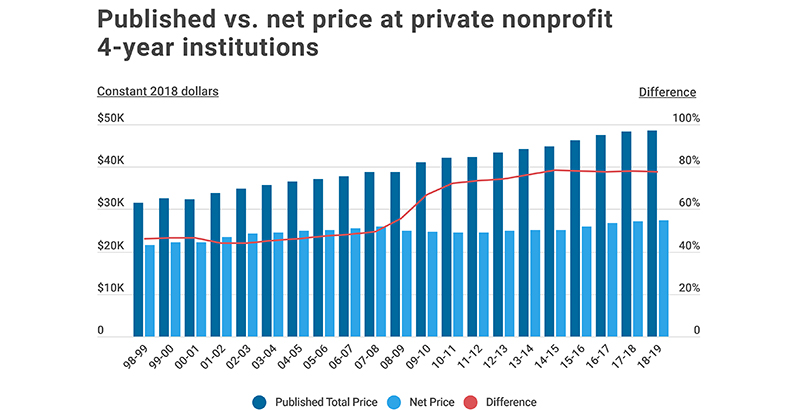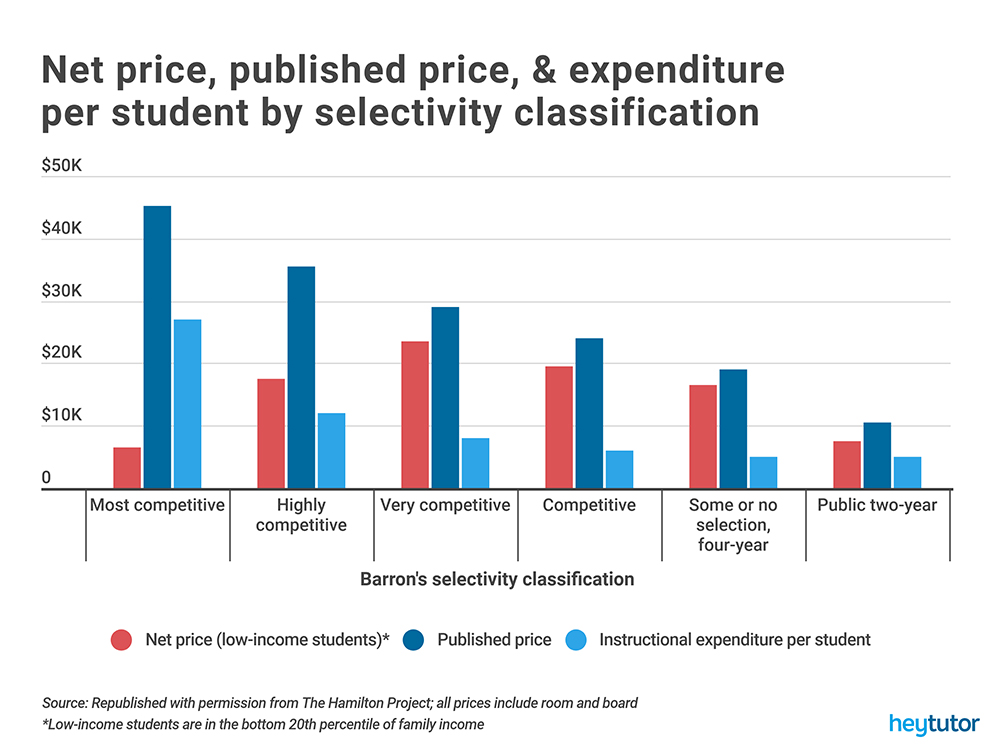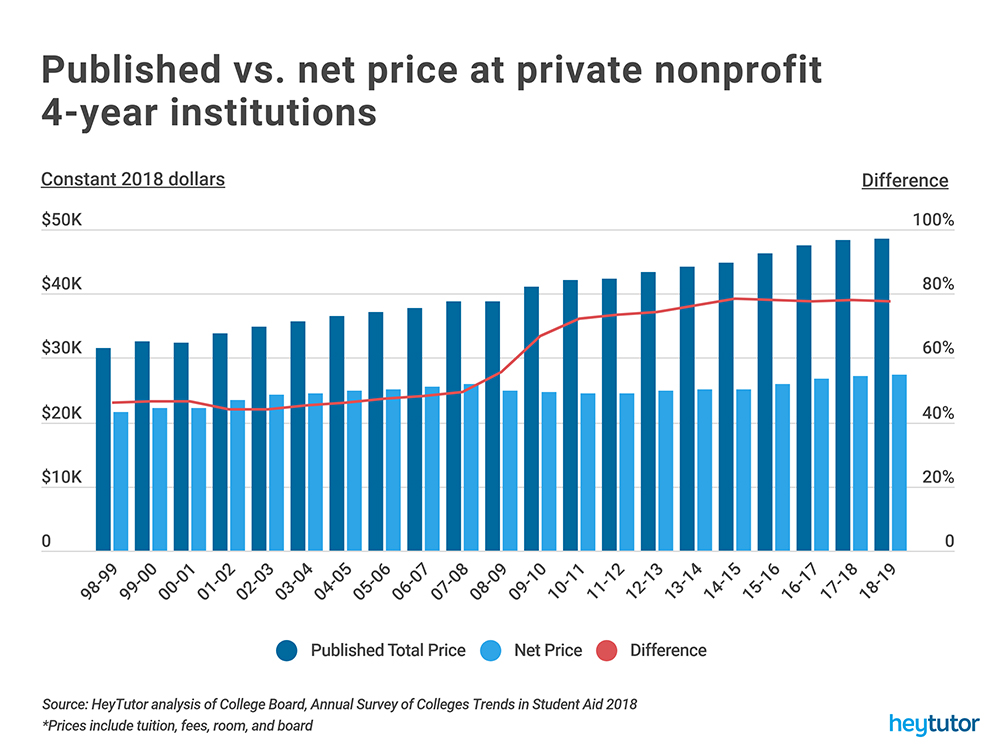Lucci: America’s Most Elite Universities Are Also the Most Affordable for Low-Income Families. Here Are the Top 5

For many families, the rising price tag of attending college is intimidating, and cost is a major factor during the process of deciding which school is the best fit for their child. On the surface, this makes sense, especially since the published price of attending some of the nation’s most elite private universities — tuition, room, board and other expenses — tops $70,000 per year. However, even the most selective schools may be more affordable than parents think.
Research conducted by The Hamilton Project shows that although the most competitive schools have the highest published prices, they also have the lowest out-of-pocket costs for low-income students. With need-blind admissions and generous financial aid programs, these schools can be the most affordable option for low-income families, while also providing an excellent education. On the other hand, many seemingly less expensive and less competitive schools ultimately cost low-income students more out of pocket and provide fewer educational resources.

What accounts for the discrepancy between published tuition and what students actually pay? Data from the College Board show that the total published price of attending private nonprofit four-year institutions increased an average of 2.7 percent per year (after adjusting for inflation) since 1998. During the same time period, the average net price (what students actually pay) increased an average of 1.3 percent per year. Over time, those differences add up, and at four-year private universities in the U.S., only about 10 percent of students pay the full published price.

The problem is that many students and parents don’t fully understand the financial aid process or the difference between the published and net prices, also known as tuition discounting. Financial aid applications are confusing and can be a strong deterrent for low-income students applying to college. Deadlines, complex questionnaires and uncertainty about the amount of aid awarded until the end of the process disincentivizes even some of the best students from applying to selective schools.
Simplifying the financial aid application process would be a great first step in addressing these issues. Equally important is educating families about their financial aid options, which would empower them to consider the best colleges regardless of price.
The Federal Student Aid Information Center provides students and families with a wealth of information on college preparation and federal student aid. It also includes a student aid calculator called FAFSA4caster, which allows families to obtain federal aid estimates before filling out the Free Application for Federal Student Aid (FAFSA). Many universities also offer school-specific calculators for estimating net price based on family income and other factors. When it comes to actually filling out the FAFSA, Nitro’s question-by-question guide is extremely helpful.
In addition to these resources, a recent study by HeyTutor analyzed net price and financial aid data from the National Center for Education Statistics to determine which private universities are most affordable for low-income students.
The following highly competitive schools offer some of the steepest discounts for students from families with incomes of $0 to $30,000 and from $30,001 to $48,000 a year (for the full methodology and complete list of the top 100 most affordable private colleges and universities for low-income students, see HeyTutor).
5. Princeton University
- Average net price ($0-$30,000): $1,948
- Average net price ($30,001-$48,000): $1,771
- Published total price of attendance: $63,850
- Percentage of students paying full price: 40%
- Undergraduate enrollment: 5,394
- Location: Princeton, New Jersey
Ranked the No. 1 national university by U.S. News & World Report, Princeton is a highly selective Ivy League university offering programs in humanities, social sciences, natural sciences and engineering. According to the Princeton admissions website, 82 percent of seniors graduated debt-free in 2017-18.
4. Berea College
- Average net price ($0-$30,000): $452
- Average net price ($30,001-$48,000): $2,197
- Published total price of attendance: $32,994
- Percentage of students paying full price: 0%
- Undergraduate enrollment: 1,670
- Location: Berea, Kentucky
Berea College is well-known for its history of inclusivity; it was the first college in the South to become coeducational and interracial. Unlike most colleges in the U.S., Berea does not charge tuition in the traditional sense. Instead, it covers costs through endowment income, funds from donations and other sources of financial aid. All students work a minimum of 10 hours per week to defray the cost of attendance, making Berea an excellent institution of higher education for students with limited economic means.
3. Stanford University
- Average net price ($0-$30,000): $0
- Average net price ($30,001-$48,000): $2,548
- Published total price of attendance: $66,184
- Percentage of students paying full price: 33%
- Undergraduate enrollment: 7,064
- Location: Stanford, California
Ranked No. 7 on U.S. News & World Report’s list of national universities, Stanford is known as one of the feeder schools for Silicon Valley’s tech companies. Stanford is a highly selective university, with only a 5 percent admission rate, but it is highly affordable for low-income students, since two-thirds of students pay less than the full tuition price. For Stanford students who receive financial aid, the median annual salary 10 years after starting school is $94,000.
2. Harvard University
- Average net price ($0-$30,000): -$230
- Average net price ($30,001-$48,000): $632
- Published total price of attendance: $66,609
- Percentage of students paying full price: 28%
- Undergraduate enrollment: 9,965
- Location: Cambridge, Massachusetts
The oldest university in the country, founded in 1636, this Ivy League institution currently sits at No. 2 on the U.S. News & World Report list. Like Stanford, Harvard is one of the most selective universities in the country, admitting less than 5 percent of applicants. For students who receive federal aid, the median salary 10 years after entering school is $89,700.
1. Duke University
- Average net price ($0-$30,000): -$1,070
- Average net price ($30,001-$48,000): $827
- Published total price of attendance: $69,558
- Percentage of students paying full price: 32%
- Undergraduate enrollment: 6,696
- Location: Durham, North Carolina
Duke University has the lowest average net price for families making $0 to $30,000 a year. The negative net price can be explained by financial aid that covers costs not included in the published price of attendance (for example, travel and participation in certain clubs and activities). For the class of 2022, Duke University had an 8.6 percent acceptance rate. The university is ranked No. 8 on the U.S. News & World Report list.
Skyler Lucci is CEO and co-founder of HeyTutor.
Get stories like these delivered straight to your inbox. Sign up for The 74 Newsletter

;)